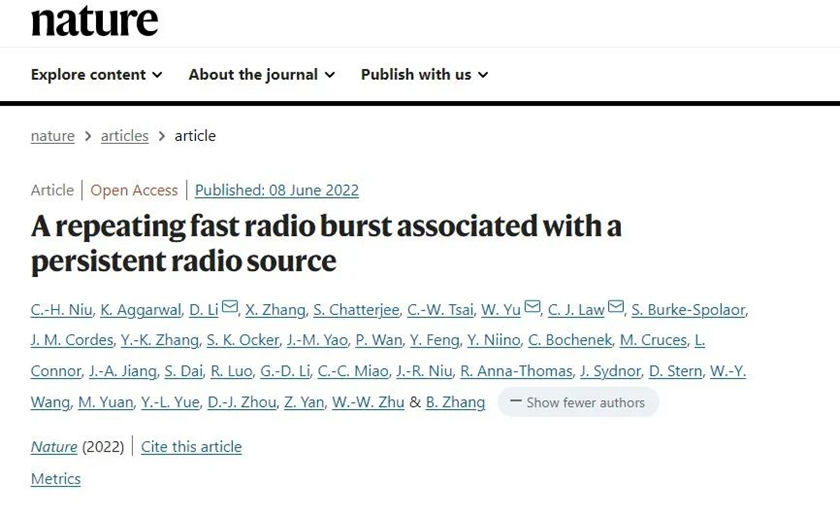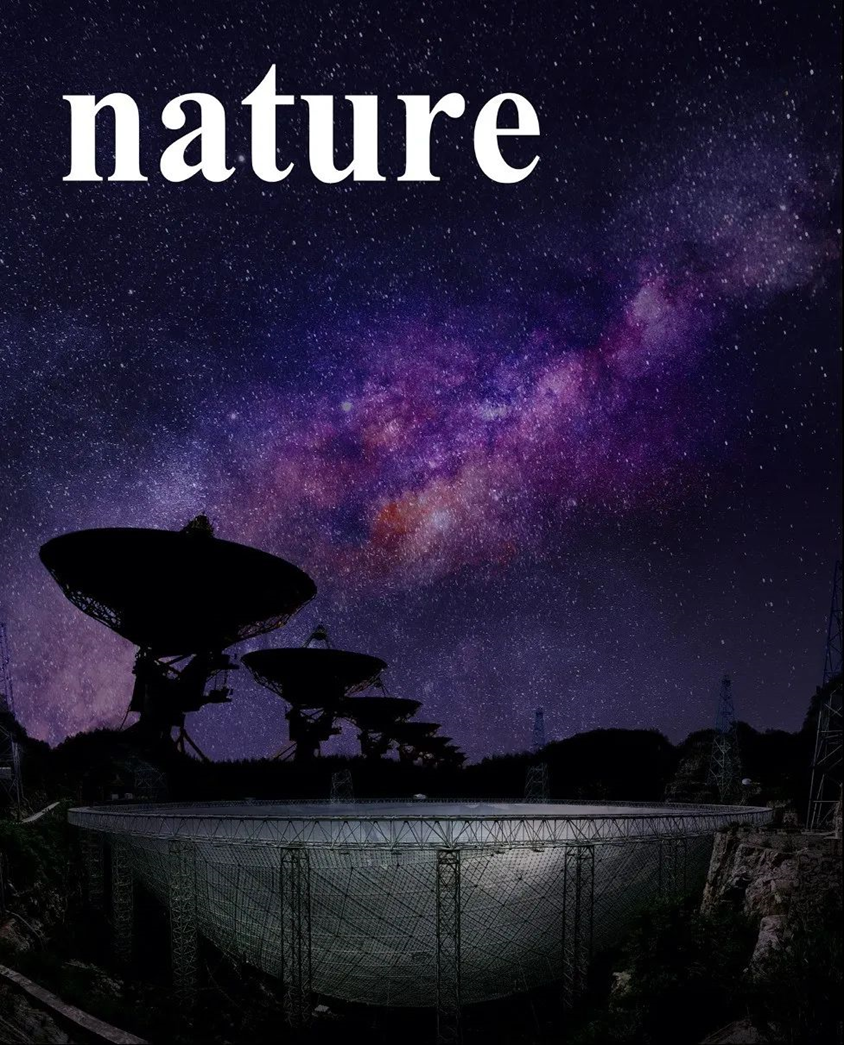

Recently, an international team led by LI Di, chief computational astronomer of ZJ Lab and researcher of the National Astronomical Observatories of the Chinese Academy of Sciences (CAS), discovered a persistently active repeating fast radio burst (FRB) coded FRB 20190520B, so far the only one of its kind, through the Commensal Radio Astronomy FAST (Aperture Spherical Radio Telescope) Survey (CRAFTS). The finding was published in the international academic journal Nature on June 9, 2022, Beijing time.

According to observations of a number of sets of ground and aerial equipment worldwide and data from radio interference arrays, optical and infrared telescopes and high-energy extraterrestrial observatories, FRB 20190520B came from a metal-poor dwarf galaxy 3 billion light-years away, where the largest known electron density was identified and the second known Persistent Radio Source (PRS) of FRB was found.
The findings indicate that the complicated environment of active repeating FRBs has the characteristics of an ultra-luminous supernova explosion. This is a challenge to the traditional FRB dispersion analysis and lays a foundation for modeling FRB evolution and understanding this violent and mysterious cosmic phenomenon.
FRBs are the brightest radio bursts in the cosmos. The energy an FRB releases in a millisecond equals to a whole year's solar radiation. FRB is a young science. In 2007, it was confirmed that FRBs exist. The first repeating FRB was detected in 2016 which rewrote existing knowledge on FRB. Today, FRB is one of the newest astronomic hot spots. Globally, nearly 500 FRBs have been made public, less than 10 of which are recorded with active bursts, namely frequent bursts during their burst windows. No persistently active repeating FRB had been detected before FRB 20190520B, discovered through FAST, is a clear analogue to FRB 20121102A detected by Arecibo Telescope of the USA in 2016. FRB 20121102A is the first known repeating FRB and the first located FRB, and was the only FRB identified with a compact radio source. Both FRB 20190520B and FRB 20121102A are active and have a complicated electromagnetic environment. However, FRB 20190520B has extreme characteristics in various aspects. For example, FRB 20121102A has active periods, while FRB 20190520B never takes a rest - FAST has detected hundreds of its explosions. The preliminary findings of the study, once published, have drawn wide attention in the astronomic circle and have inspired many innovative models and articles such as the dispersion time scale model and explanations of supernova explosion.
Based on recent FAST observations, FRB20121102A and FRB 20190520B are possibly newborn FRBs. FAST's continuous observations and, particularly, CRAFTS, a major project with priority, are likely to help portray a new evolution diagram of FRB.
Founder of FRB study Duncan Lorimer commented, "Based on the characteristics of FRB 20190520B and the existence of its PRS, I think there may be different classifications of FRBs. As the sample of FRBs continues to grow, it is expected that in the next few years, intriguing classes of objects in FRBs will be explained in detail.”
At least 6 new FRBs have been discovered so far through CRAFTS of FAST, which is working to reveal the mechanism of this mysterious phenomenon in the universe and promote research in this new field of astronomy.
FENG Yi, one of FRB 20190520B discoverers and researcher of ZJ Lab's computational astronomy team, shared some of the FRB's polarization analysis results in his article published in Science on March 18, 2022, which are important for the study of FRB 20190520B's environment.















